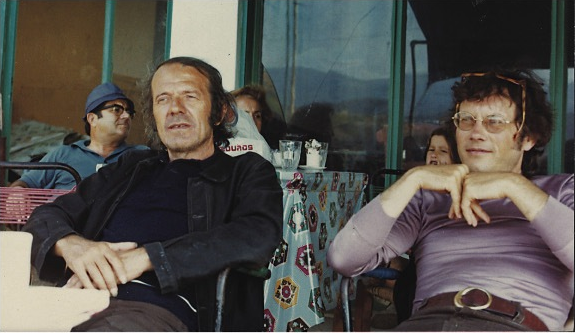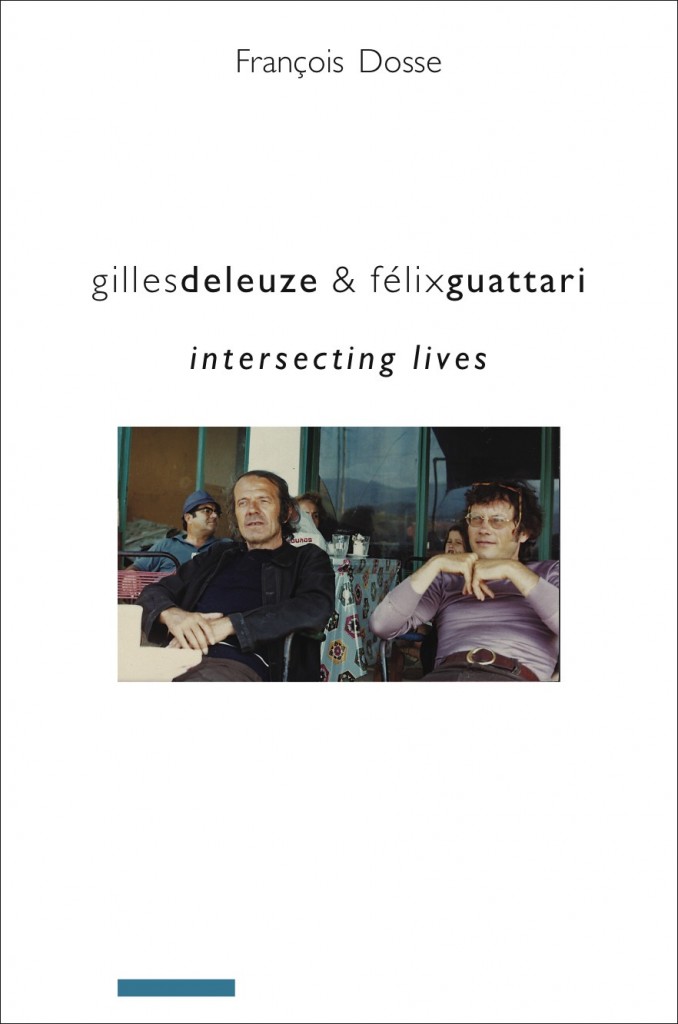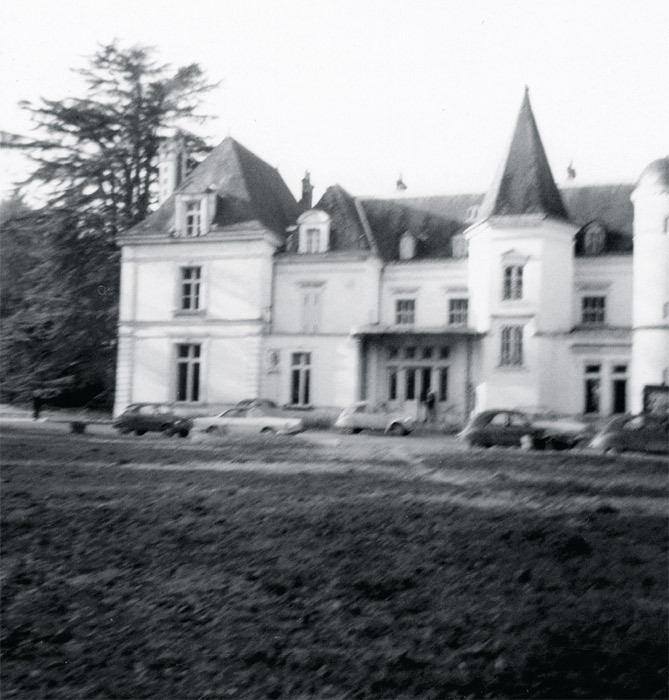Gilles Deleuze and Felix Guattari were a philosophical odd couple. Deleuze was a rising philosopher who was concerned with his philosophical predecessors: Friedrich Nietzsche, Baruch Spinoza and Henri Bergson. Guattari was a psychotherapist never had a “formal” education in the field. He learned the trade by working at an experimental psychiatric clinic and religiously attending the seminars of psychoanalyst Jacques Lacan.
In the late 60’s, Deleuze and Guattari met and decided to write a book together. The work was mostly coordinated through letters the two exchanged. Guattari would send notes and scribbles to Deleuze, who would compile the thoughts into what finally became “Anti-Oedipus.” The book was an instant hit in France. However, it tooks years for Deleuze and Guattari’s work to achieve its current infamy in American cultural studies and critical theory classrooms.
The two theorists would go on to write other texts together, including “A Thousand Plateaus”, but each had their own highly successful academic careers. Deleuze continued writing about philosophy, taught at Paris VIII University, and was heavily involved with activism, art, and film. Guattari worked heavily with anti-psychiatry movements and other radical political organizations. He was incessantly creating political groups and organizations, traveled abroad to promote clinical schizoanalysis, and even advised the French cultural minister.
The book, “Intersecting Lives” by Francois Dosse details the life and work of both authors. Clocking in at 672 pages, the tome meticulously details their work as well as their personal lives. Here are a few highlights.
#1 Guattari Helped Run a Psych Clinic That Doubled as a Communist Utopia and Insane Circus
In 1955, Guattari started working at La Borde, a psychiatric clinic in France.
La Borde wasn’t your average psych clinic. The clinic’s constitution imagined the organization as a “communist utopia.” This utopia required the disposal of formalized bureaucracy. Staff members were required to rotate in and out of manual labor to destabilize the hierarchies that existed between the “intellectual” staff and the “laboring” staff. Salaries were debated and decided in democratic committee meetings which, as you can imagine, often devolved into a shit-show.
Patient and staff co-mingling was highly encouraged. Communal spaces were set up for patients and doctors alike to plays cards or read magazines. Nurses were often indistinguishable from patients. Patients were even given responsibility over administrative tasks and could serve on the board of the clinic. One patient even served as treasurer and handled La Borde’s bank account.
When Guattari showed up, he quickly took on a leadership role. He described his demeanor towards staff as “rigidly militant.” This certainly wasn’t Guattari’s first rodeo. As the head of a pro-Tito worker’s brigade in 1949, he “confiscated the meal tickets of any recalcitrant workers who complained or dragged their feet when it came to carrying stones or digging trenches”. At La Borde, Guattari was known to order patients who refused to get out of bed to partake in some of the scheduled activities. That might sound kind of shitty, until the book goes on to describe the scene at La Borde:
Daily life was busy at the clinic: prior to the use of narcoleptic and drug therapy, conflicts between patients often erupted into fights, and it was not unusual for people to get beaned by coffee pots of tools.
Guattari eventually loosened up on his authoritarian tendencies after landing in a hospital as part of a draft-dodging scheme (Guattari was avoiding being sent to Algeria). As a patient, Guattari realized that life under the rule of tyrannical nurses was not so great. The realization followed him back to La Borde.
Guattari would often invite his friends and fellow academics to hang out in La Borde where they took up arts and crafts, worked, and even started careers at La Borde. As a result, La Borde turned into a hot-spot for intellectuals, draft-dodgers and, of course, the mentally ill.
One of those friends, Jean-Baptiste Thierree was a Maoist who performed magic. Thierree received treatment from Guattari while performing magic shows for other patients . One day, Thierree had an idea: he was going to write to Charlie Chaplin’s daughter and start a circus with her.
Victoria Chaplin not only responded, she married Jean-Baptiste. And the circus? Well, the two started it at La Borde. Because if “crippling mental illness” calls for one thing, it’s more clowns and loud noises.
The Thierree-Chaplin couple created particularly intense activities at La Borde with their circus tents, horses, wild animals, and snakes; the patients were invited to participate.
That was followed by integrating catatonic patients into the circus. Grossly irressponsible? Maybe, but it kind of worked in treating the patient.
I [Jean-Baptise] had this idea of masking him [the catonic patient] from head to toe and when he was like that he did whatever I wanted him to do. I always asked him, ‘Why do you move when you are masked?’ He never answered me, and one day he said. ‘because it’s not serious’.
When May ’68 erupted Guattari encouraged his patients to attend. This was the last straw for the director of the clinic, who soon kicked out Guattari because of his rampant shenanigans
It was at La Borde that Guattari acquired the experiences and knowledge necessary to theorize the figure of the schizophrenic and schizoanalysis.
#2 Deleuze Hated Crazy People
Many have accused Deleuze and Guattari of trivializing the plight of the deranged and being detached from their material realities. For Guattari, nothing is further from the truth. For Deleuze, this is sort of true. Deleuze’s friend Jean-Pierre Muyard was a medical student who introduced Deleuze to many ideas on psychosis and madness. Muyard recounts:
He [Deleuze] said ‘I discuss psychosis and madness, but I don’t know anything about it from the inside.’ But he was also phobic about deranged people and couldn’t have spent even an hour at La Borde.
When Deleuze would visit Guattari, he “avoided the unbearable madness at La Borde.” One dinner in particular with Felix was interrupted by a some chaos as La Borde. Deleuze’s response was less commendable:
We got a call from La Borde saying that a guy had set fire to the chateau chapel and run off into the woods. Gilles blanched, I froze, and Felix called for help to find this guy. At that point, Gilles said to me, ‘how can you stand those schizos’?”
#3 Guattari Was Almost Lacan’s Anointed Successor
One might find it slightly ironic that the author who philosophically destroyed the project of psychoanalysis and Lacan was kind of infatuated with the man. Guattari religiously attended Lacan’s seminar and became a patient of Lacan for a hefty fee. Guattari eventually ordered all of La Borde’s staff to attend Lacan’s seminar and start analysis with Lacan “if they wanted to keep working at the clinic.”
During the 1950s, Guattari was a strict Lacanian. Even his friends would call him “Lacan” as a joke. In 1964, Lacan chose Guattari as a lieutenant at the newly created Freudian School of Paris. Guattari was sure that Lacan anoint him as a “preferred partner”
Lacan met with his patients for sessions often lasting as little as four minutes. Guattari, opting for the premium-package, paid for the pleasure of driving Lacan home. The in-ride discussion was, according to Lacan, “part of the analysis.”
During one such couch-session with Lacan, Guattari mentioned to Lacan that Roland Barthes was interested in publishing one of Guattari’s papers in Communications.
Guattari talked to Lacan about it while he was on the couch, but the master was indignant: What? Why not publish it in his journal, Scilicet? Lacan ordered his patient to choose his camp. Guattari was forced to comply and asked Barthes to remove his text from the issue.
Well that’s not so bad, Lacan had taken a special interest in Guattari and wanted to take him under his wing. Publishing Guattari’s work under his own journal instead of Barthes’ isn’t too bad. But Lacan never published Guattari’s paper.

#4 Lacan Freaked Out About ‘Anti-Oedipus’ and Banned His Students From Discussing It
After Lacan had got wind that Guattari was writing “Anti-Oedipus”, Lacan curiously inquired about its contents. Guattari, not being an idiot, realized that he could not reveal to Lacan a book which attacked his entire academic career. “That was clearly not an option,” Guattari said in an interview, “Deleuze mistrusted Lacan like the plague.”
Guattari tried to assuage Lacan by lying, saying that it was Deleuze’s fault for only wanting to share a finished project. Lacan tried to investigate the matter by asking to meet Deleuze in person, who instead offered to talk to Lacan on the phone. At this point, Lacan decided the best course of action was to liquor up Guattari at a fancy restaurant so he could spill the beans on the new book.
At the dinner, Guattari did in fact explain the thematic elements of “Anti-Oedipus.” Lacan was, on the surface, receptive to the new ideas. Guattari tried to lie his ass off to Lacan to make his new ideas seem more Lacanian then they really were. Lacan eventually discovered the true content of the book, and that dinner was the last time the two ever meet.
When Lacan discovered how aggressive the book was with respect to his ideas, all the bridges were definitively burned. Not only would the two never see each other gain, but Lacan and his friends also started circulating a series of rumors about Guattari’s practice to discredit him in the psychoanalytic circles.
When “Anti-Oedipus” was finally published, Lacan censored any discussion of the book among his students. He forbade any debate about the book, and never mentioned it in his seminar. One student of Lacan noted that Lacan took “Anti-Oedipus” as “a personal attack that was all the more hurtful because he had made some gestures towards Deleuze, whom he respected.”
#5 Deleuze Considered Anti-Oedipus a Failure and Guattari was Severely Depressed
In “Intersecting Lives”, the author notes that Deleuze was disappointed by his work:
“Eight years after Anti-Oedipus was published, Deleuze considered it a failure. May ’68 and its dreams were long gone, leaving a bitter taste for those who had high hopes but were caught by the stale odors of conservatism.”
But for Guattari it was much worse:
His hyperactivity and the immense effort he had put into the book led to something of a collapse, a feeling of emptiness. Completing a work is never as satisfying as the many imagined possibilities and ongoing pleasures of a work in progress. ‘I feel like curling up into a tiny ball and being rid of all these politics of presence and prestige…The feeling is so strong that I resent Gilles for having dragged me into this mess”
#6 Deleuze Failed His University Admission Exam and Couldn’t Type
Deleuze failed his entrance exam into the prestigious École Normale Supérieure (ENS).
Despite his exceptional abilities, Deleuze failed the entrance examination for the ENS, even though his lectures drew large audiences and were considered must-see events
But it wasn’t all gloom and doom for Deleuze. He received a scholarship to study for the agregation exam and began attending Sorbonne.
When Deleuze was ready to write his thesis, he was shit-outta-luck, however, because he didn’t know how to use a typewriter. Luckily, Deleuze’s friend Michael Tournier typed up Deleuze’s work for him.
Michel Tournier’s friendly gesture was met with deep suspicion from Deleuze. After reading the typed manuscript, Deleuze “did not recognize what he had written and suspected that something had been deleted.” He gave a copy of his completed work to Tournier which read:
For Michel, the book that he typed and criticized, roundly protested, and may have even shortened since I’m sure that it was longer, but which also belongs to him somewhat as I owe him a lot (not for Hume) in philosophy
Read Part Two>>>



